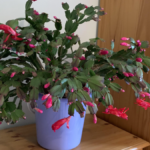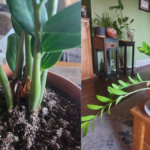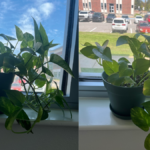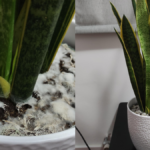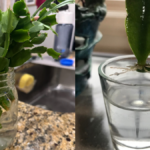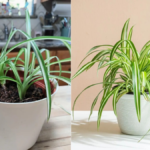How to take care of an aloe vera plant is a very common question among beginner gardeners. Aloe vera is one of the easiest plants to grow at home. It grows well in pots, gardens, and even on balconies. With the right soil, sunlight, and watering routine, you can easily keep your aloe vera healthy and green for many years.
I have been growing aloe vera for a long time. It is one of the first plants I started with when I began gardening. From my experience, this plant does not demand too much care. If you understand its basic needs, it will grow well and also give you fresh gel for skin and hair use.
Table of Contents
About Aloe Vera Plant
Aloe vera is a succulent plant known for its thick and fleshy leaves filled with natural gel. It is commonly used for skin and hair care. The plant stores water in its leaves, which helps it survive in dry weather. Because of this, aloe vera is known as a drought-tolerant plant.
Aloe Vera Plant Information
| Feature | Details |
|---|---|
| Botanical Name | Aloe barbadensis miller |
| Common Names | Aloe vera, Ghritkumari |
| Type | Succulent |
| Best Location | Balcony, terrace, or sunny window |
| Watering Need | Low |
| Temperature | 18°C – 32°C |
| Soil Type | Sandy and well-draining |
| Propagation | Baby plants or offsets |
Quick Tips to How to Take Care of an Aloe Vera Plant
- Water only when the soil becomes dry.
- Use sandy, well-draining soil.
- Keep in bright, indirect sunlight.
- Avoid overwatering, it causes root rot.
- Fertilize once or twice a year only.
- Remove dry or damaged leaves from the bottom.
Watering Aloe Vera
Watering is the most important part of aloe vera care. From my experience, most people make the mistake of watering too often. Aloe vera does not like wet soil. Its roots rot quickly if the pot stays wet for long.
I usually water my aloe vera once every 10 to 15 days in summer. In winter, once every three weeks is enough. I first check if the top layer of soil is dry. If it feels dry, I water deeply until the extra water drains out from the bottom hole of the pot. After that, I leave it until the next watering.
If you live in a humid area, reduce watering further. Always make sure your pot has proper drainage holes.
Soil for Aloe Vera
Aloe vera grows best in loose and sandy soil. Heavy garden soil that holds water is not suitable. You can make a good mix at home using:
- 50% normal garden soil
- 25% sand or perlite
- 25% compost or cocopeat
This soil mix keeps the roots healthy and prevents waterlogging. I mostly use this homemade mix for my aloe plants, and it works perfectly. You can also buy ready-made cactus or succulent soil from nurseries.
Sunlight for Aloe Vera
Aloe vera loves sunlight but cannot tolerate very strong afternoon heat. I usually keep my aloe vera near a window where it gets 4 to 6 hours of bright but indirect sunlight.
Outdoor plants should be kept in a place where they get morning sunlight and light shade in the afternoon. Too much direct sun can burn the leaves and make them turn brown.
If the leaves start bending or turning yellow, it means the plant is not getting enough sunlight. Move it to a brighter area, and it will recover soon.
Temperature and Humidity
Aloe vera grows best in warm and dry weather. The ideal temperature range is between 18°C and 32°C. In winter, protect the plant from cold wind or frost.
If the temperature drops too much in your area, keep the plant indoors near a bright window. It also grows well in normal room humidity, so no need for misting or extra care.
Fertilizing Aloe Vera
Aloe vera does not need much fertilizer. From my experience, overfeeding does more harm than good. I fertilize my aloe vera only twice a year — once in spring and once in summer.
You can use a mild liquid fertilizer or mix a handful of organic compost in the topsoil. This gives the plant enough nutrients to grow new leaves. Avoid using strong chemical fertilizers.
Propagation of Aloe Vera
The easiest way to grow new aloe vera plants is by using baby plants, also known as pups or offsets. These small plants grow near the base of the main plant.
Here is how I propagate aloe vera at home:
- Wait until the baby plant becomes about 3 to 4 inches tall.
- Remove the main plant from the pot and separate the baby plants carefully.
- Make sure each baby plant has some roots attached.
- Keep the separated plants in shade for one or two days to dry the cut.
- Plant them in new pots using the same sandy soil mix.
- Water lightly after four to five days.
Within a few weeks, the new plants start growing. I have multiplied many aloe plants this way and gifted them to friends.
Common Problems and Solutions
| Problem | Cause | Solution |
|---|---|---|
| Soft or mushy leaves | Overwatering | Water only when soil is dry |
| Brown tips | Too much sunlight | Move to a shaded area |
| Yellow leaves | Poor drainage | Improve soil mix and pot holes |
| No growth | Old soil or low nutrients | Add compost and repot |
| Flat leaves | Low light | Keep in bright area |
Benefits of Aloe Vera Plant
Aloe vera is not just a decorative plant. It has many uses and health benefits.
- The gel from the leaves helps in treating minor burns and cuts.
- It is very good for skin care and hair conditioning.
- The plant helps in improving indoor air quality.
- Aloe vera gives a natural green look to homes and offices.
I often use aloe gel directly from my homegrown plants for skin care. It feels fresh and chemical-free.
Can aloe vera survive indoors?
Yes. Aloe vera grows well indoors if placed near a bright, indirect light source like a south-facing window.
What type of soil is best for aloe vera?
Use a well-draining cactus or succulent mix to prevent root rot.
Why are my aloe vera leaves turning yellow and mushy?
This is a sign of overwatering. Let the soil dry out before watering again.
Is aloe vera safe for pets?
No, aloe vera can be toxic to pets if ingested. Keep it out of reach of cats and dogs.
Conclusion
From my experience, aloe vera is one of the easiest plants to care for. It grows in poor soil, needs very little water, and stays green for years. I have kept aloe vera both indoors and outdoors, and it has done well in both places.
If you are new to gardening, start with aloe vera. It will give you confidence and teach you basic plant care. Once you learn how to take care of it, you can grow many more plants easily.
Read more post
Sunita Williams Growing and Caring for Lettuce Plants in Space

